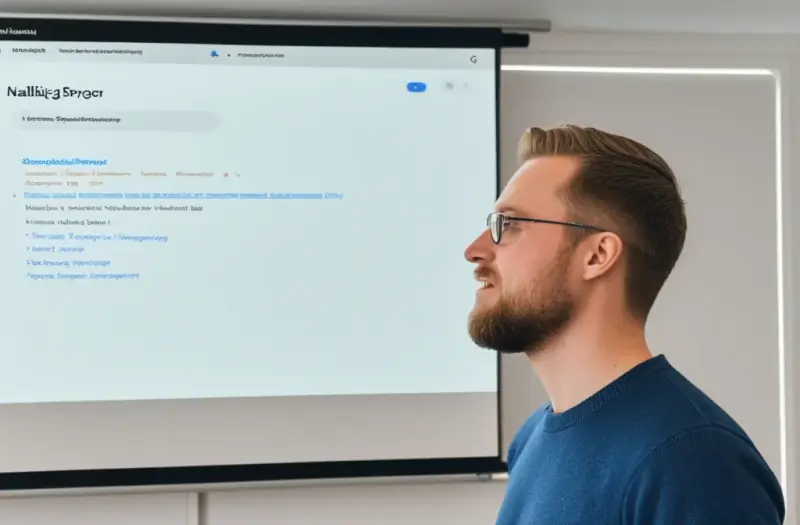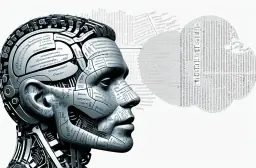Natural Language Processing: Teach Machines Language

Table of Contents
Today, we face a world where machines are becoming better at understanding and interacting with us in our own language. This is a central part of what we call Natural Language Processing (NLP), which is a branch of artificial intelligence and machine learning. But how do machines actually learn to understand human language? That’s what we’ll dive into here.
What is Natural Language Processing (NLP)?
Natural Language Processing (NLP) is the process by which machines learn to understand, analyze, and interpret human language. Through NLP, it’s possible for computers to analyze and respond to written and spoken inputs from humans, enabling everything from automatic translation to language-based artificial intelligence like chatbots and voice assistants.
How NLP Works
When we talk about NLP, it’s largely about getting machines to process language data. This can happen through:
- Language analysis: The machine breaks sentences down into individual words and analyzes their relationships.
- Semantic analysis: The machine tries to understand the meaning behind the words in a given context.
- Automatic speech recognition: The machine listens to spoken words and converts them into text for further processing.
These processes happen using advanced NLP algorithms, which are continuously improved through machine learning.
Why is Natural Language Processing Important?

In a world where we are becoming increasingly dependent on technology, the ability to communicate with machines in a natural way is crucial. Natural Language Processing helps us to:
- Understand and process large amounts of data: Text analysis makes it possible to extract meaningful information from large datasets.
- Communicate with digital assistants: Tools like Siri and Google Assistant rely on NLP to answer our questions and understand our commands.
- Automate translations: With machine translation, we can translate texts across languages in just seconds.
NLP has revolutionized the way we interact with technology and will continue to play a big role in the future.
NLP’s Building Blocks: Computational Linguistics and Machine Learning
To understand NLP, we first need to look at the underlying technologies. Computational linguistics combines linguistics and computer science to develop algorithms that can analyze and process human language. Together with machine learning, these algorithms can “learn” from large amounts of data, enabling machines to improve their language understanding over time.
How Machine Learning Helps NLP
Through machine learning, computers are trained to recognize patterns in language. For example, they can learn to:
- Distinguish between different meanings of the same word depending on the context.
- Understand complex sentences, even when they deviate from common grammar rules.
- Process linguistic nuances, such as irony or sarcasm, which were previously difficult for machines to grasp.
Examples of Natural Language Processing Applications

NLP is used today in many different applications that we interact with daily:
- Speech processing: This includes voice control in smartphones and smart speakers, where users can give spoken commands to the devices.
- Machine translation: Google Translate is a good example of how NLP is used to translate between languages.
- Chatbots and customer service: Many companies use NLP to automate customer service interactions through chatbots.
Challenges and Limitations in NLP
Although we’ve come a long way with NLP, there are still many challenges. Linguistic nuances, dialects, and slang can be difficult for machines to fully understand. Additionally, different languages may have completely unique grammatical rules, which can be hard to generalize across systems.
NLP’s Future
We envision a future where NLP will become even more advanced. With advances in language data processing and NLP algorithms, machines will soon be able to understand language in a way that’s almost as nuanced as human understanding.
FAQs about Natural Language Processing
What is Natural Language Processing (NLP)?
NLP is a branch of artificial intelligence that focuses on how machines can learn to understand and analyze human language.
How do companies use NLP today?
Companies use NLP to automate customer service, analyze large amounts of text data, and improve interactions between humans and machines.
What’s the difference between NLP and machine learning?
NLP is a specific application of machine learning, with a focus on language technology and language understanding.
How can machines understand context in language?
By using machine learning and large datasets, machines can learn to recognize patterns in language and apply these patterns to understand the context of sentences.
Conclusion
Natural Language Processing is now a fundamental technology that allows machines to understand and respond to human language. Through advanced NLP algorithms, machine learning, and language technology, we’ve seen enormous progress in how computers can process and analyze text and speech. While challenges remain, the future of NLP is only getting brighter.
Key Takeaways
- Natural Language Processing (NLP) is about getting machines to understand human language through language technology and machine learning.
- NLP is used in everything from automatic speech recognition to machine translation and chatbots.
- With future advances, NLP will be able to understand language with even greater precision and nuance.
Popular Tags
ADS SPACE HERE

